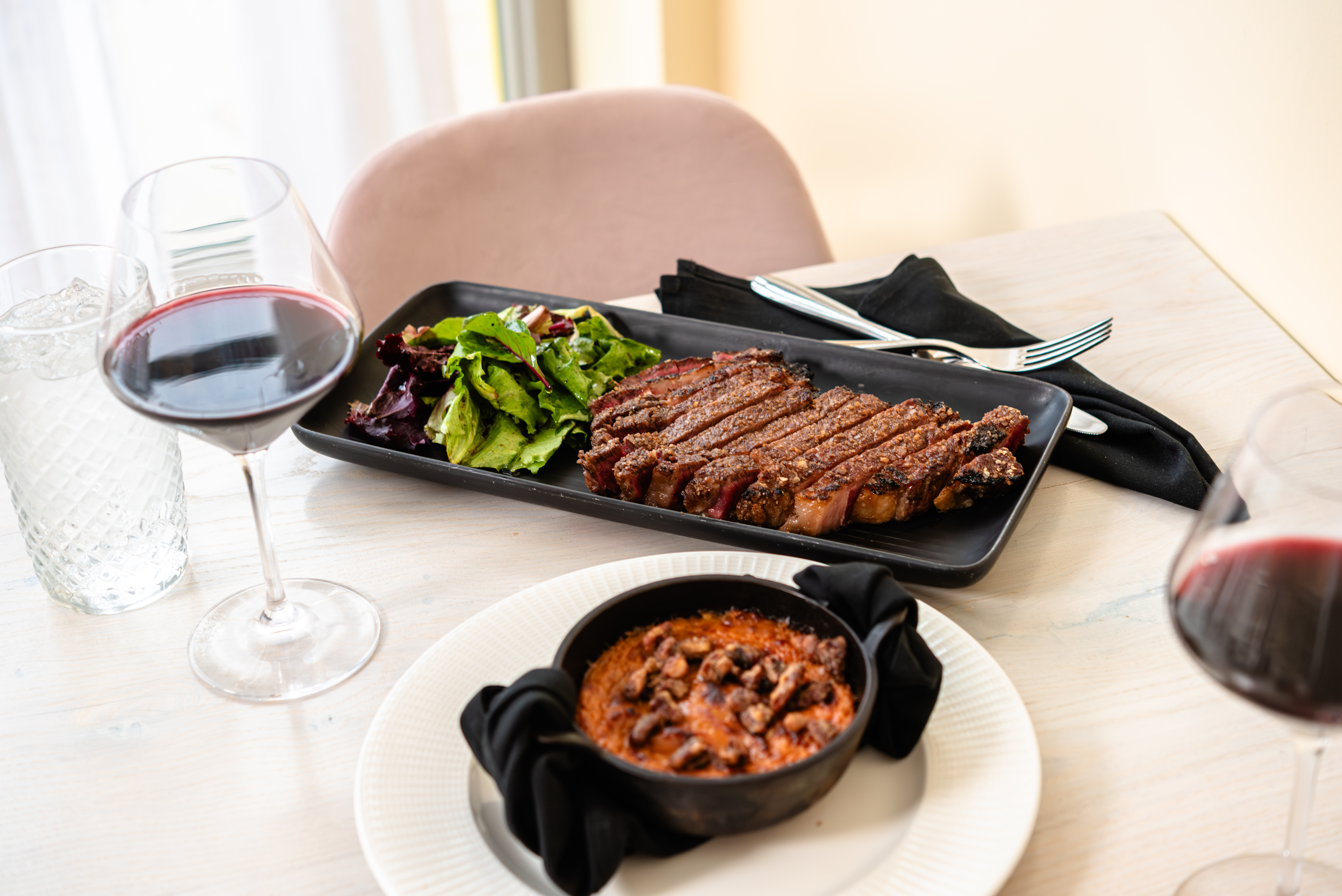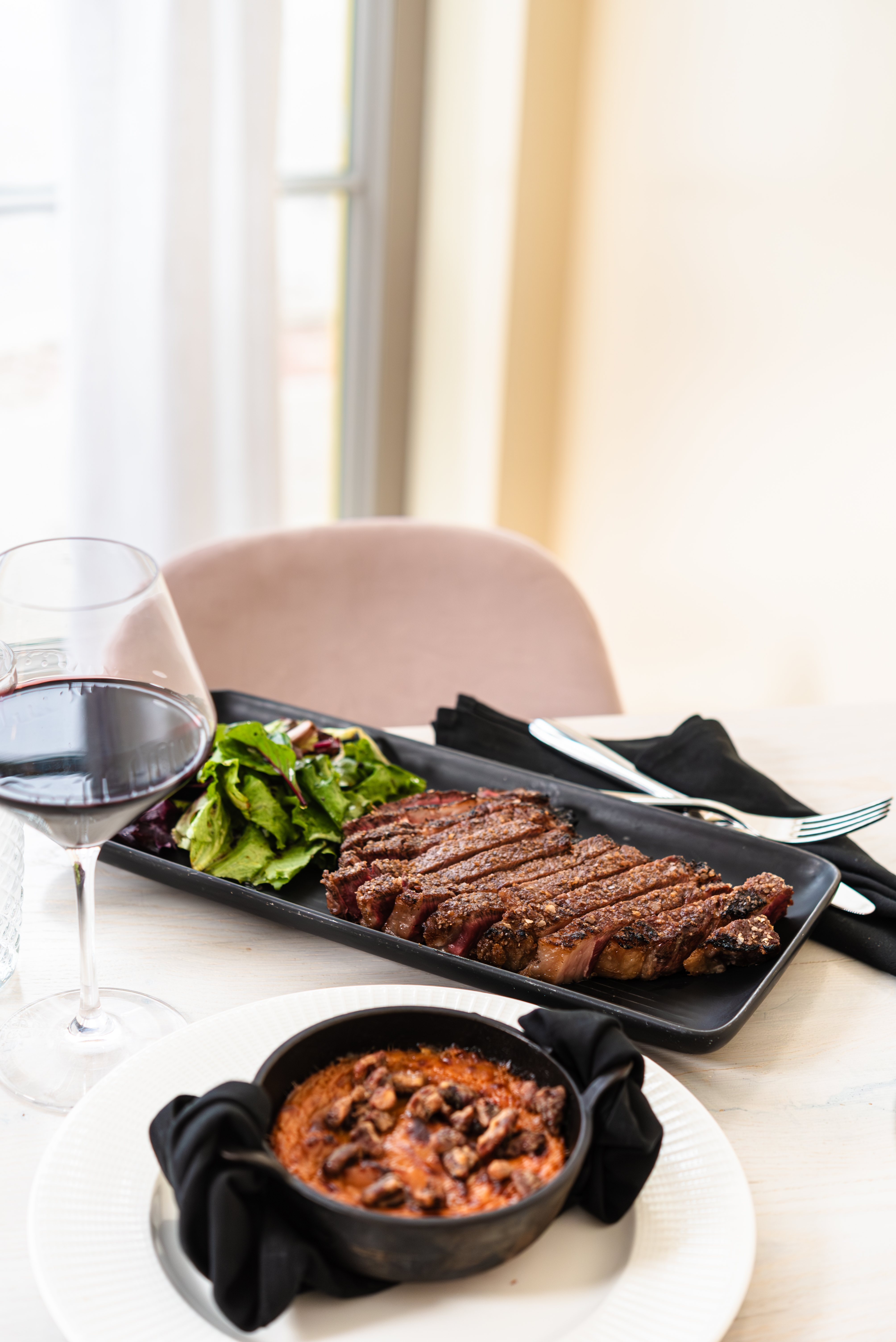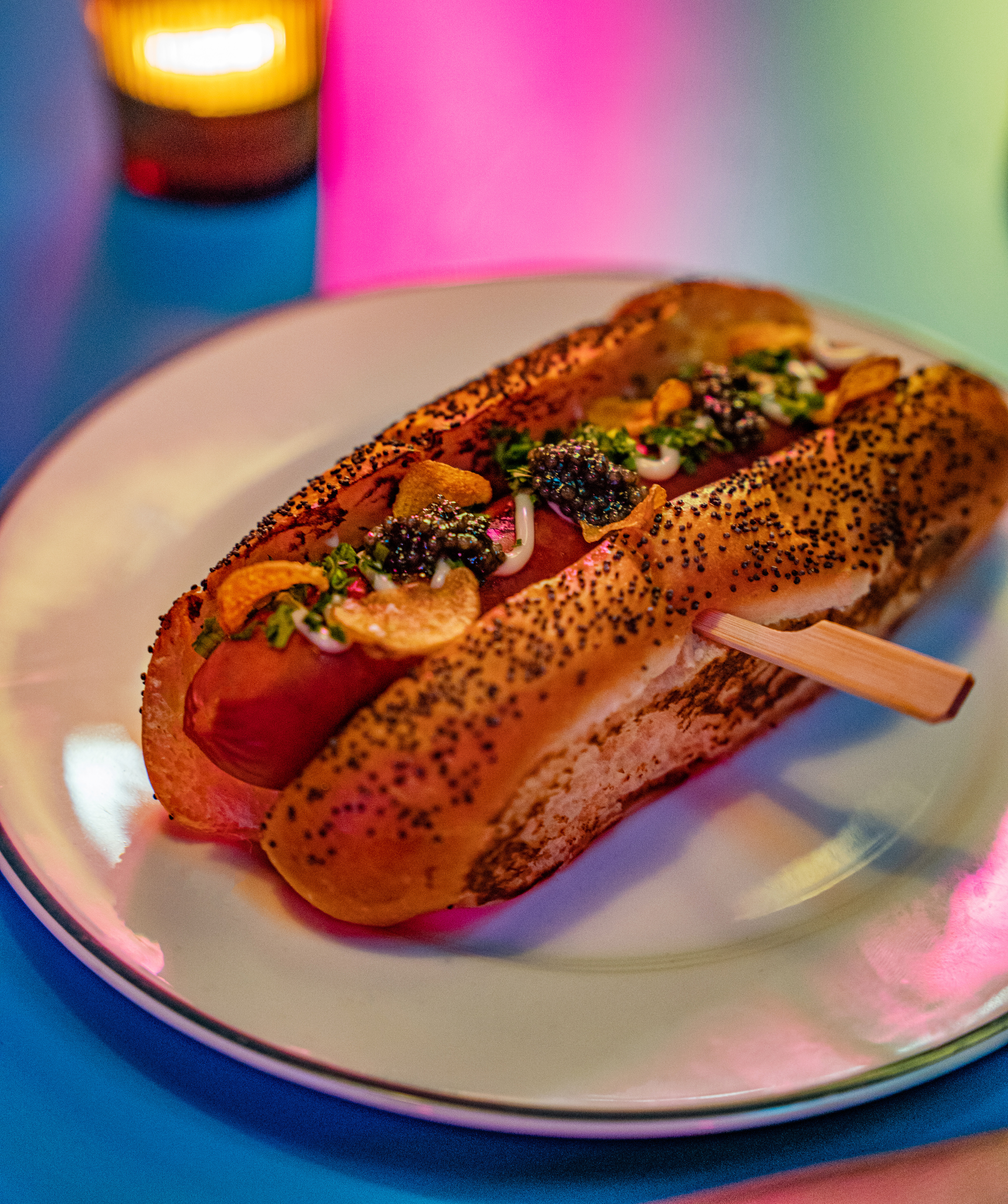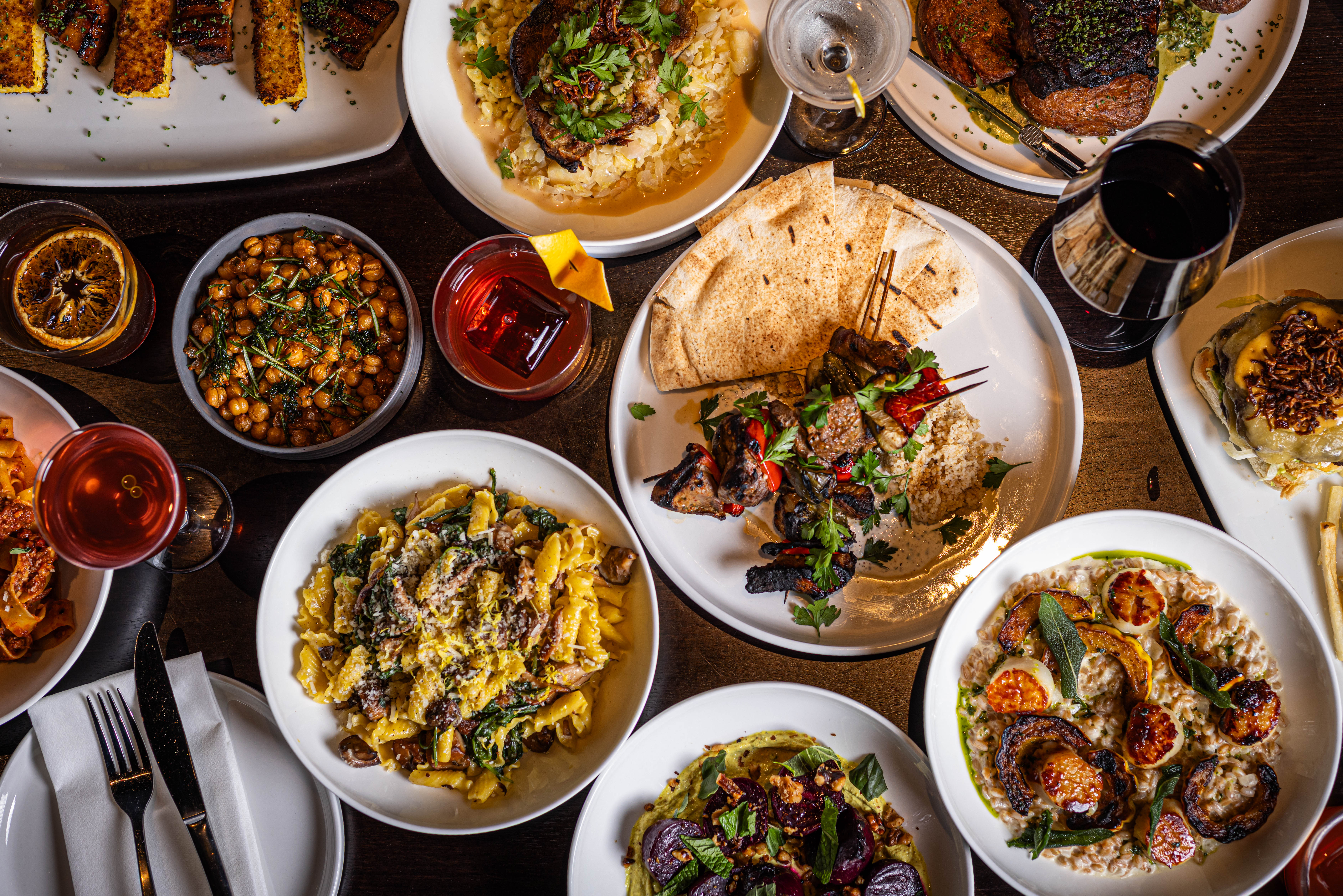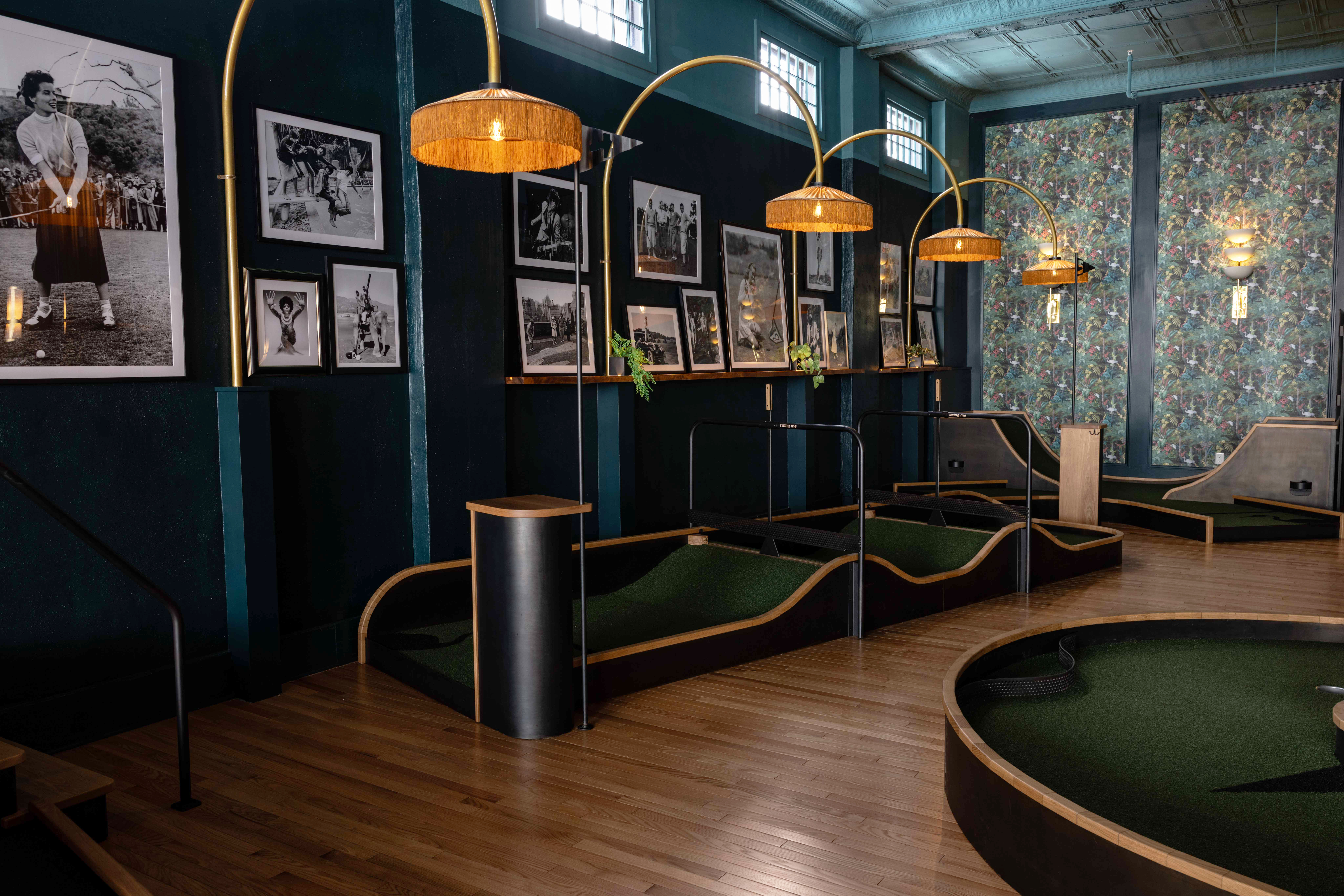What We're Craving Now: Chef Jonathon Sawyer's Greenhouse Tavern
by Amber Matheson | Apr. 28, 2010 | 4:00 AM
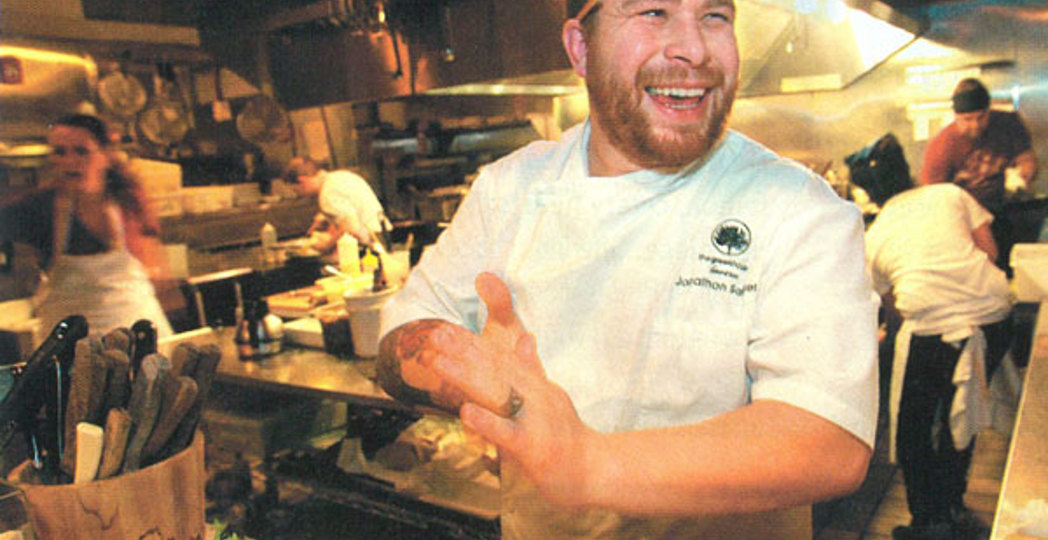
Jonathon Sawyer needs a cough drop. The 29-year-old wunderkind chef hollers his request through the glass fronting of The Greenhouse Tavern.
"CVS?" he half asks, half shouts. "Cough drops! Sugar free!"
He's not sick. "I never stop talking and yelling, so I have to, like, therapy myself," he explains with typical forthrightness.
It makes sense. The owner of East Fourth Street's Greenhouse Tavern is a whirlwind of obsessive energy. He is constantly tweaking, playing and driving his wife and everyone else crazy.
"I still feel like the chandeliers are a little bit too bright," Sawyer says, squinting up at the balcony. There is always something he wants to fix or change. Six months ago he added a new wall near the back of the restaurant. Four months ago he repainted part of the balcony. Yesterday, he created a display of empty wine bottles behind the bar.
Sawyer never stops. Period. The man is tireless. His wife, Amelia, is tireless. His staff loves him — so they, too, are tireless. Twice during an early-afternoon interview, Sawyer acolytes appear out of the bowels of the restaurant with culinary experiments. Sawyer tastes each and makes suggestions. The new Aaron Miller Ohio beef burger, made of meat from the eponymous supplier, is still a little too dry.
Sawyer then wraps up detailed suggestions on the restaurant's "Not Belly" (because anyone can do pork belly, so why not riff on it a little?), with a complimentary, "It smells f---ing heady. I think that's what we should do."
He's like a judge decreeing a final verdict, confident but not cruel. The staff members disappear with Sawyer's feedback, and within seconds he is off to the next project.
Last April, Sawyer and a close-knit team of friends, including Amelia, chef/partner Jonathan Seeholzer and designer Jonathan Sin-Jin Satayathum, opened the doors of the long-whispered-about, uber-eco-friendly Greenhouse Tavern.
To open the first Ohio restaurant certified by the Green Restaurant Association, Sawyer embraced sustainability at every turn from decor to energy-efficient hand dryers in the bathroom to his relentless focus on local ingredients. He even originally planned to build a greenhouse on the restaurant's roof, but that part hasn't happened. Yet.
Sawyer had other sustainable fish to fry first. Mainly, he needed a public recycling Dumpster within a short walk of the restaurant's East Fourth Street location. So Sawyer asked for it, and asked and asked.
In February 2009, he went to city councilman Joe Cimperman. Nothing. Even a month after opening, staffers were taking glass home to recycle. Something had to be done. Sin-Jin, as Satayathum's known around the Tavern, points to an innocuous green and blue recycling Dumpster sitting in a parking spot in the corner of a Network Parking lot — a tiny area, barely 20 parking spaces and just steps from the doors of Quicken Loans Arena — as one of Greenhouse Tavern's biggest victories.
Working in concert with the city, Sawyer and his staff convinced the company to donate the space for a recycling Dumpster.
"They understood. They got behind it," Sin-Jin says. "In a neighborhood where there is a lot of residential and restaurants, that had no access to recycling, now we have made it available to everyone."
It's easy and accessible. Lola and Flannery's already use the Dumpster, and the Corner Alley is considering it.
"[We] wanted to leave the world a little bit nicer than what had been left to us," Sawyer says. But there's always more to do. The Greenhouse Tavern fills a 95-gallon composting drum every other day.
"Basically, nothing that goes through our dining room on a dinner plate doesn't get recycled," he says. And once the staff is used to the system, the restaurant's waste will be cut by 75 percent.
"I'm honestly insane," Sawyer says, "but I thought [other restaurant owners would say], •If this idiot can do it, I can f---ing do it. How hard could it be if he could do it?' "
Idiot? Debatable.
At 19, Sawyer had a quasi-religious experience with seafood. While working as a chef at a Florida restaurant, he and a friend sat in the walk-in cooler and — instead of passing a stolen bottle of liquor back and forth — slurped the best oysters Sawyer had ever tasted. He estimates they ate more than 70 between them. It marked the beginning of Sawyer's lifelong passion.
Barely out of his teens, Sawyer toiled under Michelin-starred, Gayot-beloved Charlie Palmer at New York City's Kitchen 22. He came to Cleveland to work with Michael Symon, whose star was just beginning to rise, and he followed stints at Lola (then in Tremont) and Symon's
New York City restaurant, Parea, with a part-time job helping develop charcuterie recipes for Dante. In his mid-20s, Sawyer collaborated with the equally young and ambitious Sam McNulty on Ohio City's wildly popular Bar Cento.
He garnered a James Beard Rising Star nomination for that restaurant, the equivalent of the Oscars for chefs. This year, he was a semifinalist for the award again and was named one of Food & Wine magazine's Best New Chefs — this time, for a restaurant that's entirely his own. Sort of.
"The way that we always build restaurants is, we hire as many people that we can that have been with us in the past, and that way it feels more like a menu change and less like opening a new restaurant," he says.
The Greenhouse Tavern is a massive vision. Rather than just preaching sustainable practices, Sawyer wants them to work like his cooking, as one distinct flavor in a harmonious dish. "We still want people to come in and say, •You know, that's the best burger I've ever had.' "
And it just may be. The guy makes a damn good burger. Same goes for the vegan pork rinds. But if you have your little heart set on them for dinner, get there early.
Greenhouse Tavern runs out of menu items all the time — by design. "We try to be out of fish every Saturday night," Sawyer says. He's frugal. His green sensibility transcends hybrid cars and new light bulbs. It's about finding the right and wrong at the heart of the environmental crusade: It's just not right to waste food.
" •Happiness' and •easy' are both terms that are relative," Sawyer says. " •Easy' for me is making sure every plate tastes good when it leaves the kitchen. •Easy' for someone else might be making sure they don't run out of chicken wings on Friday."
So, yes, it's easier to make stock with chicken or veal bones. But Sawyer won't buy chicken bones. He'd rather make stock from day-old pasta blanching liquid fortified with vegetables, vegetable peelings, maybe Parmesan rinds or country ham rinds.
His next goal is to stop buying cuts of meat altogether. He wants the whole damn animal. The kitchen staff has found ways to use the whole pig: cotechino (sausage), rillette (a sort of meat butter), pate, saltimbocca, pork tenderloin. Beef is next on the list.
"It's more economical. That's the whole game for me," Sawyer says. "There's so many — so many! — uses for everything."
But it's not easy. In fact, it's hard to run a locally sourced restaurant in the winter.
"I'm dying to have a slice of fresh tomato," he says during our March interview. "I'm sure our customers are, too, but it's just not gonna happen. There's the beets, there's the Swiss chard, there's four different orders of pommes frites." The staples he needs — lemons, grapefruits, olives — often have to be brought in from afar. "There are realities we've got to face."
Sawyer follows a "chain of command," as he calls it, for his ingredients: Local is always the top choice in his food chain, followed by local and sustainable, then sustainable and organic. "After that," he says, "it's whatever it is."
The chickpeas in the vegan squash dish on his winter menu, for example, are from California. Sure, Sawyer's disappointed, but he doesn't apologize. He estimates that about 80 percent of his winter menu is local, but that number rises almost to 100 percent come summertime.
So, back to the greenhouse. It's coming. Perhaps it'll be here by the time you read this story. Like everything about The Greenhouse Tavern, it's a work in progress. Money is the biggest issue, but Sawyer's got a big team on board, including support from city leaders.
"The city wants to help," Sawyer says. "Have they given us a solar-powered windmill? Not yet, but I think we're getting there." His five-year plan is to be totally off the grid with recycled rainwater and self-generated electricity.
"We want to kind of serve as a model, not only to other restaurateurs, but people who own buildings downtown."
Sawyer doesn't see what he's doing as a fringe movement. He points out how Cleveland-based real estate development and management company Forest City Enterprises could benefit from embracing the same principles.
"You guys own millions of buildings, in millions of cities, and you have an opportunity to do a flagship project here," he says, before describing how even a company like Forest City could benefit from its own greenhouse. "You give employees a basket of fresh produce, ensuring their healthiness, ... and you're reducing the temperature of the environment, and you're also reducing water that's used. All those things are pretty easy, just by doing a greenhouse."
He smirks. It's not that easy. But it can be done, by a 29-year-old dude covered in tattoos, pinballing around a gorgeous, delicious and eco-friendly restaurant that holds the promise of not only changing what we eat, but how we think about food.
Trending
-
1
-
2
-
3
-
4
-
5





